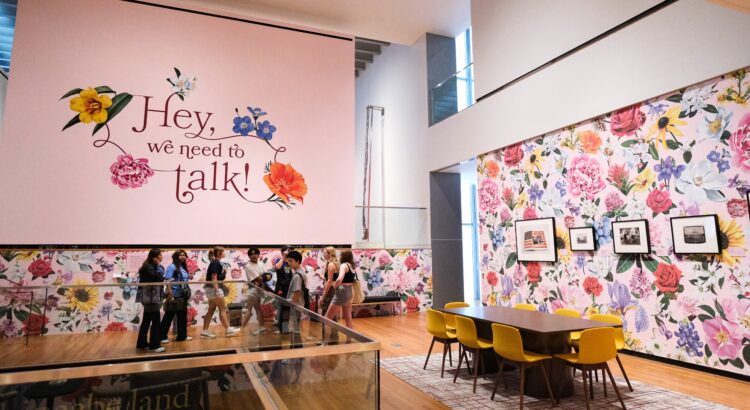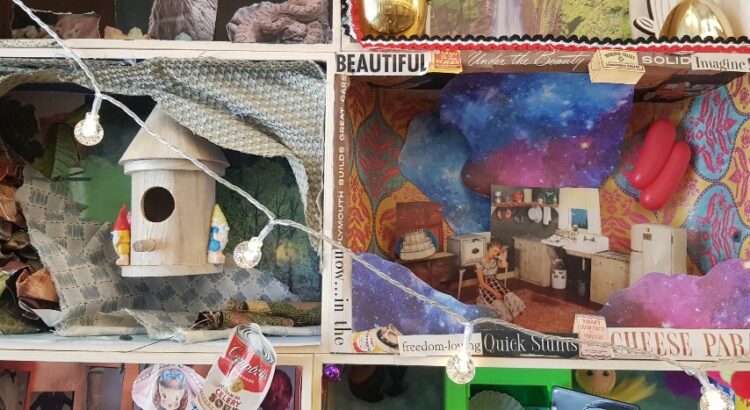Through its Vote 2024 suite of programs, the U-M Museum of Art has asked the campus community, “How can we strengthen our democracy?” Visiting artist Philippa Pham Hughes answers this question with the title of her exhibition: “Hey, We Need to Talk!”
Hughes, the current Visiting Artist For Art & Civic Engagement at UMMA, is a social practice artist who works to create a flourishing society through human conversation and connection. With the presidential election approaching and politics an increasingly divisive subject, it’s harder than ever to communicate with those who disagree with us. With “Hey, We Need to Talk!” Hughes encourages us to sit down, break bread, and talk honestly about our fears and hopes for America.
The second-floor Crumpacker gallery has been transformed into something that is part curated art exhibit, part interactive experience, and part community gathering space. Brightly colored wallpaper (designed by artist Louise Jones, also known as Ouizi) covers the walls, bursting with beautiful illustrations of the nation’s fifty state flowers against a pastel pink background. Groups of comfortable chairs and low tables form places to sit and converse in small groups. The space feels instantly joyful and welcoming. The works of art hanging on the gallery walls are well curated, chosen from UMMA’s collection to provide discussion prompts about American life and values, but they take a back seat to the social artwork of the exhibition as a whole.
The exhibition’s Gallery Guide describes it a “social sculpture,” and invites visitors to “complete the artwork” by making social connections with others in the space. It gently encourages discussion with other viewers, and provides a series of open-ended questions about the artworks as a conversation starter. There is also a tear-away card in the back of the pamphlet, asking participants to write their answer to the question, “What does it mean to be an American?”

I found these cards to be the most compelling part of the exhibition. Large photo albums filled with them are placed on tables around the room. I sat and flipped through one, reading the answers, which ranged from silly to profound. Some were clearly written in elementary schoolers’ handwriting, some in other languages. They expressed a wide range of sentiments, from gratitude and hope to frustration and despair.
Throughout the period of the exhibition, numerous events focused on fostering dialogue about American democracy will be held in the gallery space. This includes the weekly Common Sense Diner events, where people with differing political viewpoints share a meal and guided conversation. Participants are not asked to reach an agreement or change their views—only to ask questions, listen, and try to find care and common ground if they can.
This exhibition is unlike any other I have experienced at UMMA. It goes beyond artwork on gallery walls, fostering genuine delight, comfort and connection. If we want to build a stronger nation where everyone can flourish, maybe all we really need to do is just sit down together and talk.
“Hey, We Need to Talk!” is on display at UMMA until February 9, 2025.








